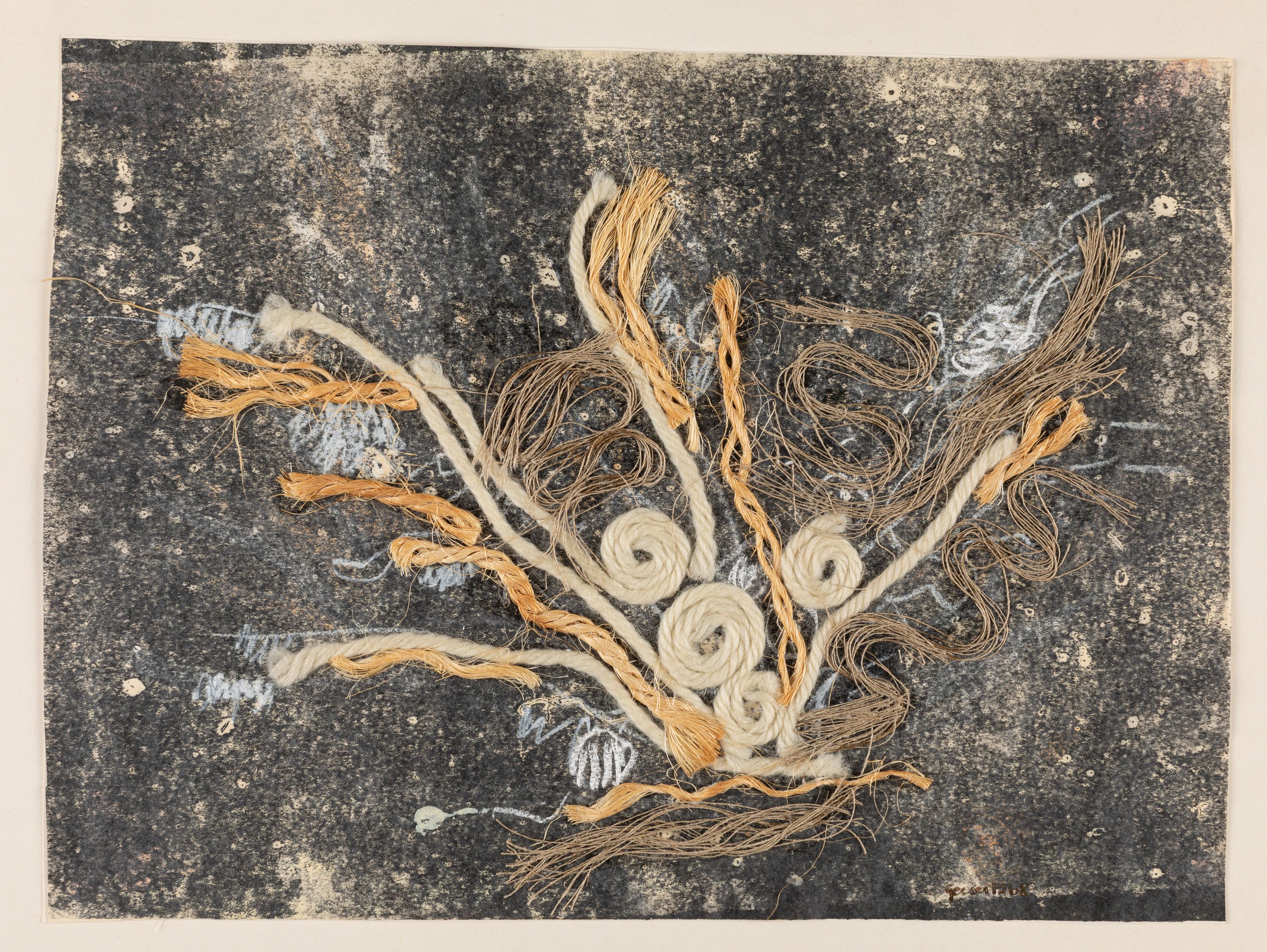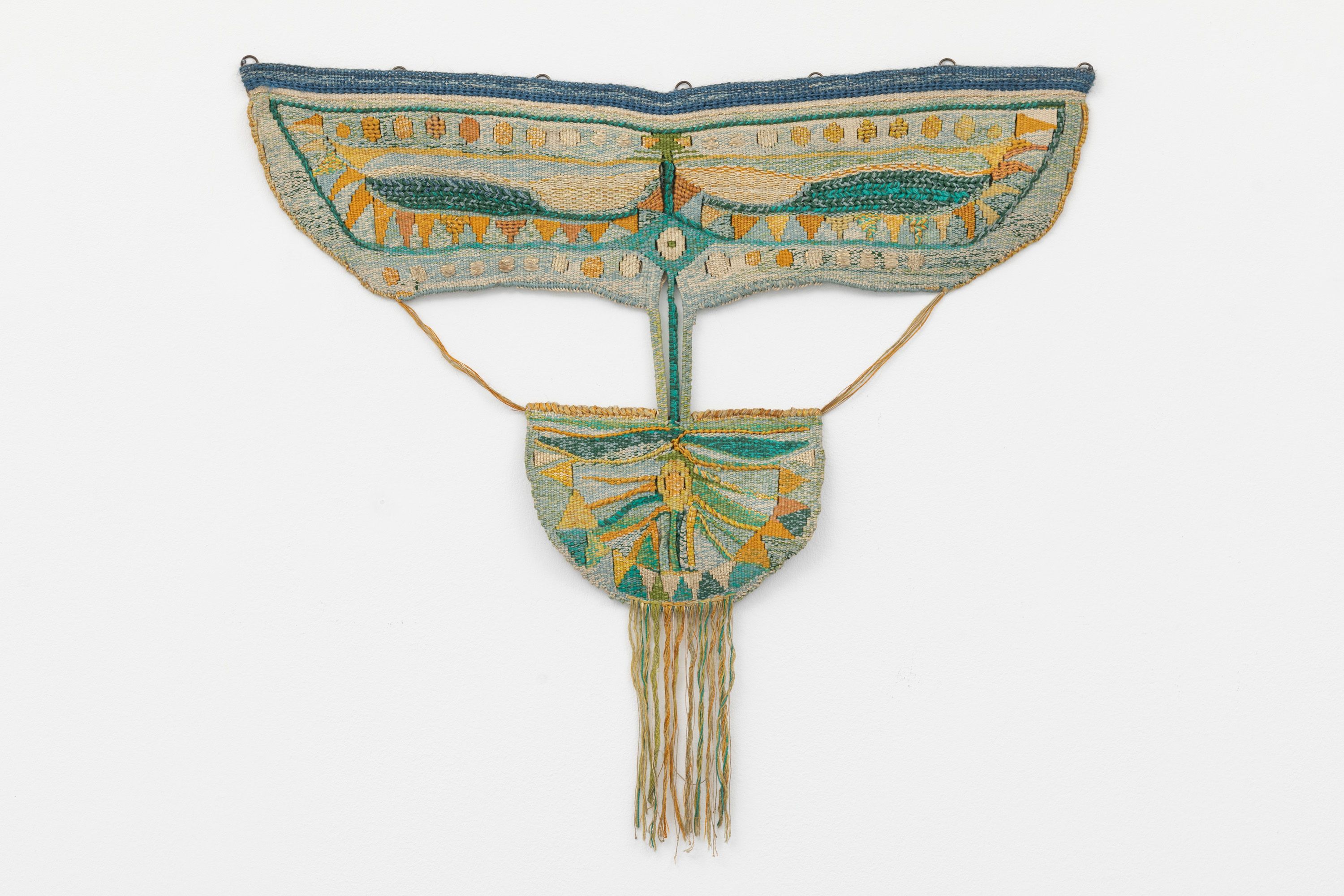Lujza Gecser
Textile/Images
| Venue: | acb Attachment |
| Date: | Sep 15 – Oct 20, 2023 |
| Opening: | Sep 14, 2023, 18:00–21:00 |
Description
Lujza Gecser (1943-1988) was one of the most original representatives of Hungarian experimental textile art. Between 1964 and 1968, she graduated from the Hungarian Academy of Applied Arts, where she had studied weaving design on a scholarship of the Hungarian Spinning and Weaving factory, with ties to the wool industry. The institutional reform which extended to textile art coincided with the beginning of her career: the exhibition Textile/Wall Hangings'68, which served as a springboard for the emancipation of Hungarian textile art, was presented at the Ernst Museum in the year of her graduation. Gecser became a key figure of the second generation of the textile revival that followed. In addition to her involvement in a number of large-scale national and international textile art shows, she was a frequent exhibitor of the Szombathely Textile Biennial network. She was also one of the most regular participants of the Textile Art Worksop of Velem (1975-1983); there were only a few times that she was not involved in the experimental work that took place there (for a six week period each year). In fact, for Gecser, the Velem Workshop, located in Vas County, was of outstanding importance, as the cornerstones of her career were mostly connected to her time spent there and the results of the experimentation made possible in that context. As a representative of experimental textile art, Gecser’s oeuvre is among the most radical bodies of work. Making a definitive break with the traditional format of presenting textile art on a wall surface – which had also defined her beginnings as an artist – she proceeded to create the classics of Hungarian spatial textile art in the mid-seventies. In the meantime, she was constantly exploring the structure of textile and its constituting fibre, as well as the possibilities of using various new materials as textiles. Her persistent research was also in sync with an interest in textile art, as well as areas of visual arts using textiles, which was characteristic at the time and could be traced back all the way to the historical avantgarde, leading to the introduction of the new term, fibre art. By the turn of the eighties, Gecser – like so many of her peers, including Anikó Bajkó, Gabriella Farkas, Judit Gink, Kati Gulyás, Ilona Lovas and Csilla Kelecsényi – had travelled the long path leading to various modes of conceptual art, to a complete break from the applied roots of textile art, and to autonomous artistic thinking, in which the new media, especially experimental film, environment and installation, played a major role.
At the beginning of her career, Gecser worked with traditional tapestry and knotted macramé techniques. Her favourite material was sisal; she was greatly influenced by folk art and pre-Columbian art, paralleling the interest of her North American peers and contemporaries. In 1976, she won First Prize at the 4th Wall and Spatial Textile Biennial of Szombathely with her work entitled Bridges. This large-scale, mature work, which she had created in the previous year at the Velem workshop, is among the first examples of Hungarian spatial textile art. Three-dimensional textile art appeared in her commissioned works in an innovative form as well. Examples include her piece created for the Baikal Restaurant, located in the former House of Soviet Culture (1973) and her textile art furnishings made for the Cocktail Bar in Petőfi Street (1976). Her stage set designs, including the backdrop created from rope constructs for the Bartók Children’s Theatre (1973-74) also bore traces of spatial textile art. The beginnings of this new orientation were marked by the work entitled Zygote in 1972, employing the macramé technique mentioned above, and by Two Minutes in 1974. In 1976, her experiments with fibres (sisal bundles) stiffened with plaster, as well as synthetic resin used for a similar purpose, led to an in-depth exploration of synthetic materials. This endeavour was aided by her time spent at the Tisza Chemical Works, during which she could avail herself of the plant’s infrastructure in preparation for her solo exhibition at the Zwinger in Kőszeg in 1978. From that point on, her work with various foils, cellophane, aluminium foil, transparent materials, sateen and silver spray paint – conducted in the name of experimenting with materials invoking the workshop practices of the Bauhaus (especially Anni Albers) – remained fundamental to her art. In 1979, the visual effect created by the superimposed projection of slides taken of her earlier synthetic material-based works signified a cornerstone discovery, which led her along a path towards utilising film in her works, projected onto spatial structures constructed from transparent and non-transparent materials. Examples of the latter approach were presented at the exhibition Textile without Textile, as well as her solo show at the Jókai Cultural Centre in Budaörs. Following in this direction, she used mirrors to build a large-scale environment in Velem, which is usually compared in the literature to Erzsébet Schaár’s work entitled Street. In 1984, she reconstructed the same work for her solo exhibition at the Műcsarnok/Kunsthalle Budapest. Together with film director András Szirtes, she made an experimental film about the environment she created in Velem (Mirror Reflections, 1981-82), invoking the heyday of avantgarde film art and László Moholy-Nagy’s Light Space Modulator. At the turn of the eighties, Gecser also became interested in film as a raw material for traditional textile techniques (weaving). Initially, she created “tapestries” by cutting and reweaving reproductions of her own graphic works. As a next step, she used negative strips and exposed the “woven fabric” together with the warp strips. Subsequently, she experimented with the further possibilities of not only photo-weaving, but also photography and the celluloid strip as applicable in weaving and creating woven fabrics, all the while increasingly employing the visual language of process art. In 1983, she once again turned to the traditional raw materials of textile making, and how they could be shaped sculpturally, processed through the various filters and transfers of pop and concept art, and utilising everything she had learned from her previously conducted stiffening techniques. These drapery studies – inseparable from the influence of gothic and baroque art – are like shells, revealing the form of the human (mostly female) body.
Gecser was a regular and widely active exhibiting artist at both national and international exhibitions. In addition to the abovementioned shows, she also participated in such defining exhibitions of “thought textile art” as Photo-Textile Art? (1982) and Textile after Textile (1978/79). Alongside Margit Szilvitzky and Gábor Attalai, she had the opportunity to debut her works in separate exhibition rooms at the Hungarian textile art group show, held at the Amos Anderson Museum in Helsinki (1977). She exhibited her works at the International Tapestry Triennial in Łódź on several occasions, as well as major textile art fairs in Leipzig (1976), Warsaw (1976), Aalborg (1977) and Linz (1981). She also participated in the show Material Change (1982), which was held as an accompanying event to the documenta in Kassel, as well as in the comprehensive exhibition entitled Living Textile (1988). In recent years, the acb Gallery has paid particular attention to Hungarian experimental textile art, its achievements and its role within the context of the neo-avantgarde/post-avantgarde canon. This exhibition of Lujza Gecser’s works, selected from her estate and displayed for the first time in the spaces of the acb, continues in this vein. The show held at acb Attachment focuses on the initial period of the artist’s career that had set her on the path of radical experimentation, with some of the works dating back to the very beginning. Her paper-based works consists of material-collages, demonstrating modes of encounter between drawing/graphic art and textile design, both of which were deeply defining for Gecser’s oeuvre. While her monotype collages, stylized and individualized folk art motifs and material samples constitute works that are simultaneously autonomous and applied, an experimental character is already evident in these pieces, which incorporate unique colour combinations and harmonies. The exhibition also includes an early tapestry and other sisal works that still show the traces of traditional tapestry, as well as its extension it into three-dimensional space. The Red Prayer Rug echoes Gecser’s interest in pre-Columbian art and Asian craftsmanship; the smaller sisal works represent the first steps of extending the macramé technique into space, while also capturing the quality of “playfulness” inherent in textiles and bearing imprints of the anthropologising approach of traditional “crafts”. The exhibition also includes the aforementioned film on the mirror maze, pointing viewers to the artist’s later, mature, experimental works in the seventies, as well as the significance of her crossing and expanding across media boundaries in her work as she took those steps towards filmmaking at the turn of the eighties.

